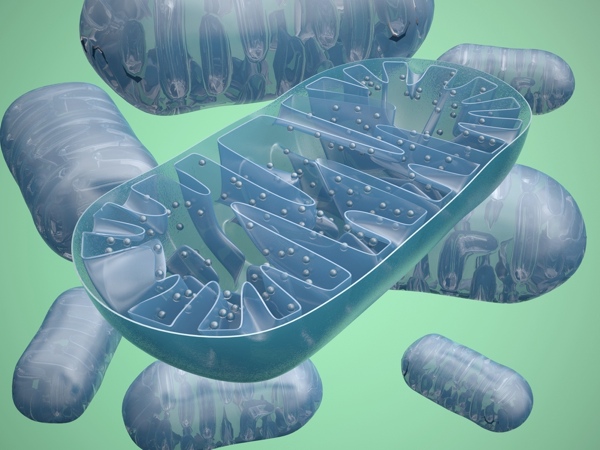
A recycled drug gives us new insight in to HD
An existing drug could give a boost to HD brain cells – but it may need more testing before it’s back in the clinic

Researchers have found a connection between HD and an energy-regulating protein called PPAR-delta. Giving PPAR-delta a boost with an existing drug was protective in HD cells and mice, but we’ll likely need to research and test it further before it can go to the HD clinic.
Repurposing therapies
Sometimes a promising new drug proves to be safe to use in people, but not useful for treating the disease it was designed for. In this case, scientists may take it back to the bench, doing new tests on cells and in mice to better understand its function. Ultimately, that knowledge might lead to a safe drug being repurposed to treat a different disease.

Recently, a safe but shelved diabetes drug was explored in experiments related to Huntington’s disease. The drug works on a protein found inside most types of cells called PPAR-delta. Normally, PPAR-delta works to help regulate how cells, especially fat and brain cells, consume energy.
This new HD research confirms just how important PPAR-delta is for fueling healthy brain cells – and shows that the HD mutation can interfere with how PPAR-delta does its job. In HD cells and mice, using a drug to give PPAR-delta a “boost” promoted healthier cells and led to improvements in behavior. This is exciting, but more testing is probably needed before it can be tested in HD patients.
PPAR-delta is an important transcription factor
HD scientists focused became interested in PPAR-delta because its a protein with an important management job in cells. Like personnel at a large corporation, every protein in a cell operates within a delicate hierarchy of coordination and control.
Some proteins accompany and supervise others in small groups, others oversee those supervisors, and are in turn managed by branch directors, and on up to the CEO. Cells don’t really have a CEO, but the higher-ups hold the keys to the nucleus, the cell’s control center, where the DNA is stored.
“Interestingly, the anatomy and behavior of mice with no PPAR-delta in the striatum was somewhat similar to HD mice – they had striatal damage and difficulty with movement and cognitive tasks. So, having less PPAR-delta in the striatum is bad news, and the consequences of this loss look a bit like mouse HD”
PPAR-delta is an interesting target for HD research because it is one of those higher-ups: a protein called a transcription factor. These proteins initiate and coordinate the process of making the genetic DNA “blueprint” into a functioning protein, effectively deciding which proteins need to be built to keep the cell running smoothly.
When a protein like PPAR-delta is at the hub of the action of many other elements in a functioning cell, it is sometimes called a “master regulator.” Because of its key position coordinating cellular health, a transcription factor with a strong link to HD could have good potential as a drug target.
PPAR-delta and HD in a dish
A group of scientists at the University of California San Diego, headed by Albert La Spada, has been looking at the role of transcription factors in HD for many years. For their most recent publication, they tested lots of transcription factors to see which ones typically physically interact with the huntingtin protein, and PPAR-delta was one of them. But why focus in on it?
PPAR-delta is in charge of a branch of operations that build and maintain mitochondria, the cell’s energy powerhouses. Brain cells have a high metabolism, so they need lots of energy to survive. Cells in a part of the brain called the striatum, those affected first and most strongly in HD, are especially vulnerable to problems with mitochondria, so PPAR-delta could be particularly important there.

Image credit: Protein Data Bank
La Spada’s team experimented with proteins and cells in a dish to show that huntingtin protein and PPAR-delta stick directly to one another, a good indication that they could be working together in cells. Importantly, they also found that the HD mutation leads to lower levels of PPAR-delta, and that this messes up the maintenance of mitochondria, contributing to cell damage and death.
The researchers could correct the damaged HD neurons (still in a dish) by treating them with a PPAR-delta agonist – a drug that “boosts” the action of PPAR-delta, making it more effective at regulating energy. This drug, called KD3010, was developed by a now-defunct biotech company as a diabetes treatment. When KD3010 was delivered to HD cells in a dish, it seemed to do a good job protecting their mitochondria from the harm caused by HD.
Moving on to mammals
The San Diego research group did multiple experiments in cells and mice to show that PPAR-delta is important for mitochondria and essential for brain health. That’s an important contribution by itself, but they wanted to look more closely at the connection between PPAR-delta and HD.
To study this, they used a genetic technique to remove PPAR-delta from just the cells in the striatum, those that are most susceptible to damage in HD. In other words, can the cell’s business still function when an important director quits? And how does that affect the whole organism?
“Nevertheless, if KD3010 holds up under more experimentation, it would be much easier to move it into the clinic for HD, because we already know that it’s safe for humans”
Interestingly, the anatomy and behavior of mice with no PPAR-delta in the striatum was somewhat similar to HD mice – they had striatal damage and difficulty with movement and cognitive tasks. So, having less PPAR-delta in the striatum is bad news, and the consequences of this loss look a bit like mouse HD. This supports the idea that losing some function of PPAR-delta could contribute to HD, and boosting PPAR-delta might be a good strategy for HD.
The next step was to test the PPAR-delta enhancing drug KD3010 in HD mice, to see if it could give the HD brain a boost. In KD3010-treated mice researchers saw healthier neurons in the striatum, mild improvements in movement behaviors, and the mice had a slightly longer lifespan.
Potential for the clinic – possibly
PPAR-delta and its agonist KD3010 have made a splash in the news recently because it’s exciting when a safe drug shows promising results in cells and mice. But hype about a possible clinical trial in a couple of years should be regarded with caution. While this research made a big leap forward in our understanding of what PPAR-delta does in the brain, the connection to HD needs to be confirmed before we start testing KD3010 in people with the mutation.
From this recent work, here’s what we do know. First, PPAR-delta is definitely important for a functioning brain, and it interacts with huntingtin protein directly. Second, we know that mutant huntingtin impairs PPAR-delta, so it can’t perform its important function correctly. Third, increasing PPAR-delta in HD cells can protect them and the health of their mitochondria.

But as for using KD3010 as a treatment in the near future, there are some limitations to consider. The researchers only tested the drug in one type of HD mouse model, and saw relatively mild improvements in behavior. Even though this work revealed some important links between PPAR-delta and huntingtin protein, it may not be useful to begin testing an enhancer drug in people before we have stronger evidence that it is effective as a treatment in different types of HD animal models.
This is also one of the first times that the role of PPAR-delta has been researched in the brain, for any disease. Before we give it a pharmaceutical boost for a brain disease, it will be critical to better understand its important coordinating role in cells throughout the body, including what other proteins and pathways it might guide and direct.
Nevertheless, if KD3010 holds up under more experimentation, it would be much easier to move it into the clinic for HD, because we already know that it’s safe for humans. In the meantime, studying the master regulator proteins that are relevant to HD will continue to promote the discovery of innovative treatments – both new and old.
Learn more
For more information about our disclosure policy see our FAQ…


